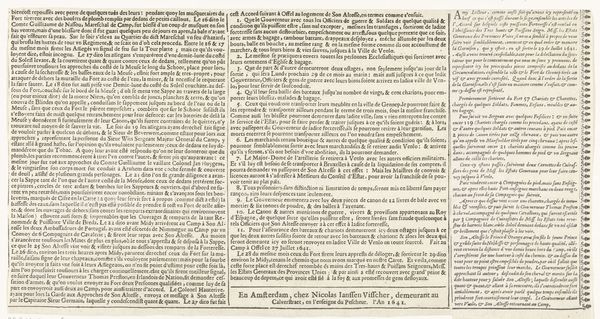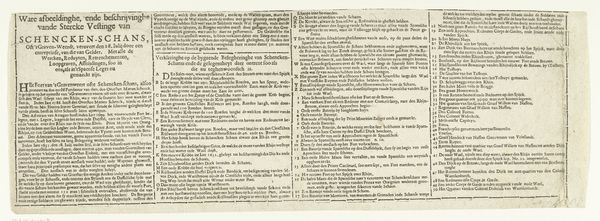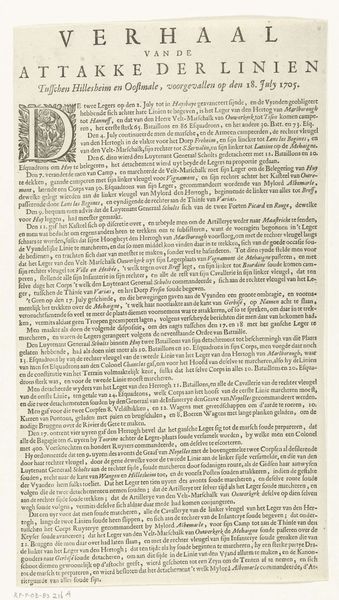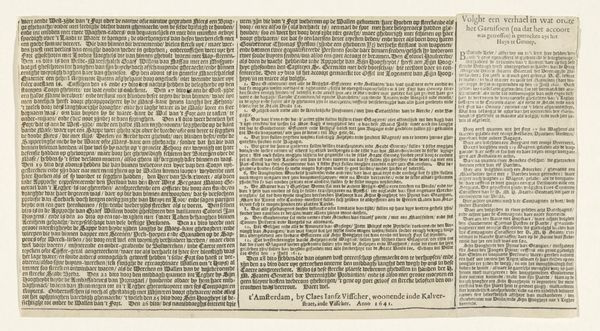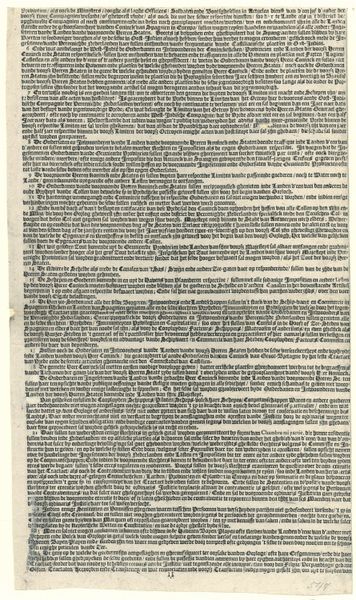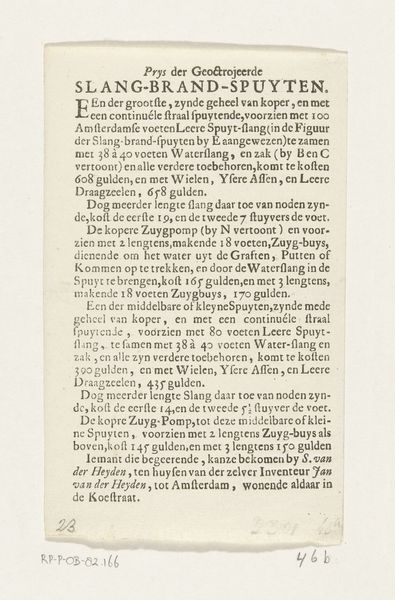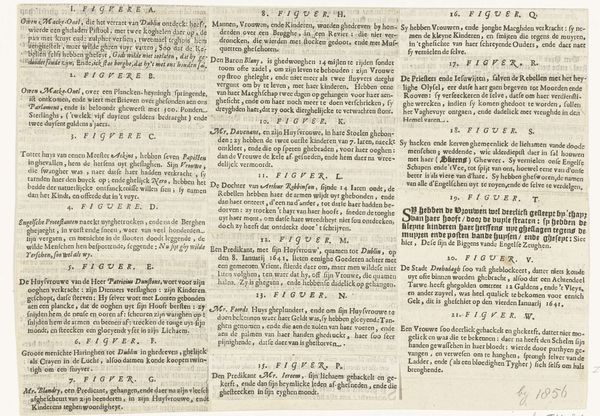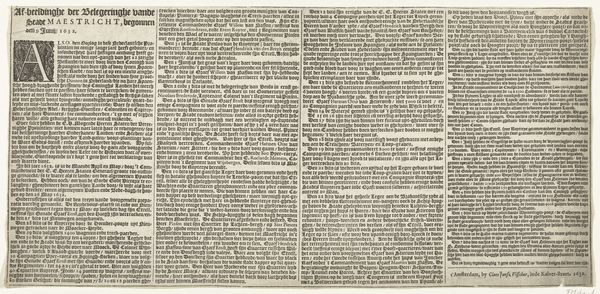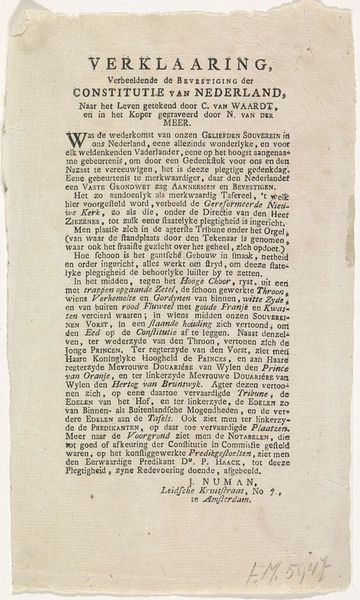
Beleg en inname van Den Bosch door Frederik Hendrik, 1629, (tekstblad) 1630
0:00
0:00
graphic-art, print, engraving
#
graphic-art
#
dutch-golden-age
# print
#
history-painting
#
engraving
Dimensions: height 502 mm, width 153 mm
Copyright: Rijks Museum: Open Domain
Curator: Good morning! Let’s explore this piece, "Siege and Capture of Den Bosch by Frederik Hendrik, 1629 (text sheet)" made around 1630 by Cornelis Danckerts I. It's an engraving, currently held in the Rijksmuseum. At first glance, it mostly appears to be an expanse of dense text. How would you interpret a piece like this? What aspects stand out to you? Editor: Well, it's a bit overwhelming, honestly. It looks like a block of text with not much visual interest, at least at first glance. I see this must have been the news, what we might see on television, in our modern world. What was the intention here, since it is a historical document about an important siege and the cultural memory for an important victory? Curator: Precisely. The sheer density itself communicates a cultural imperative. The Dutch Golden Age was obsessed with chronicling events, weaving tapestries of textual detail. Think of it as a visual and cultural performance, enacting and recording history simultaneously through symbols and written form, reflecting their collective identity and national pride. Consider what aspects the artist or publisher chooses to record, in text form, and how people might pass the broadside in the streets and choose what part they need to see. Editor: So, it's not just about recording facts, but also shaping how people understood their history and identity through the act of storytelling itself, and how the choice of content helps with propaganda about this important Dutch victory? Curator: Absolutely! Notice how the text might function almost as a relic or emblem. It represents the weight of historical events, rendered permanent through ink, resonating as cultural memory passed down through generations. Editor: It’s amazing how something seemingly simple can hold so much cultural significance. Curator: Exactly! By understanding the power of symbols, we reveal deeper truths about human experience across time and place. It’s a potent reminder that art serves not just as aesthetic enjoyment, but as a vessel of our shared humanity.
Comments
No comments
Be the first to comment and join the conversation on the ultimate creative platform.


